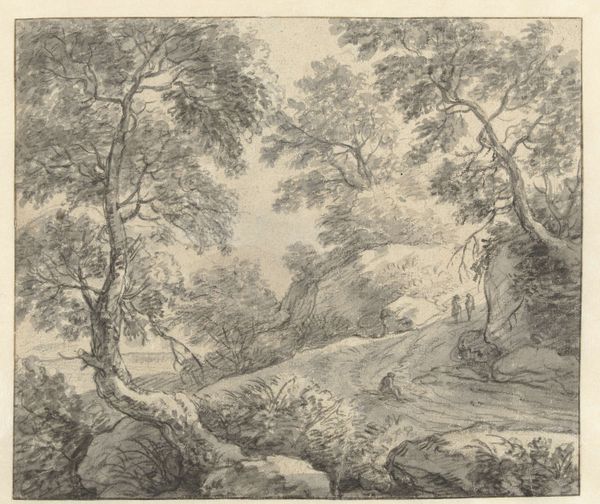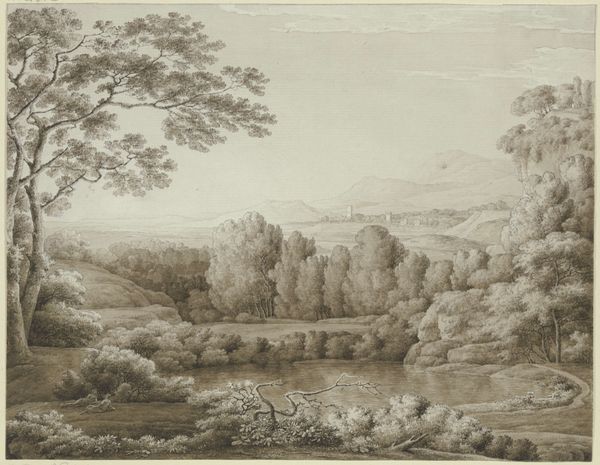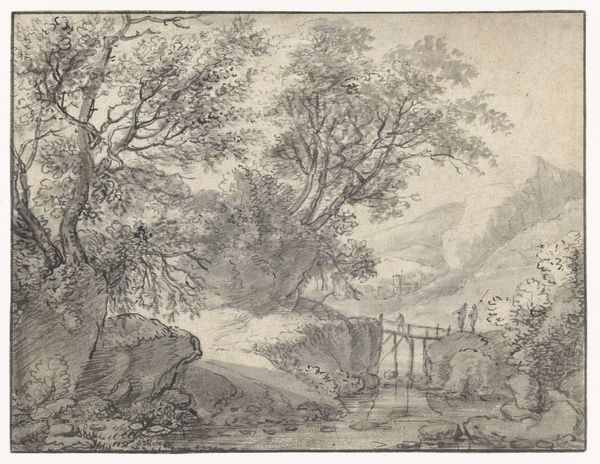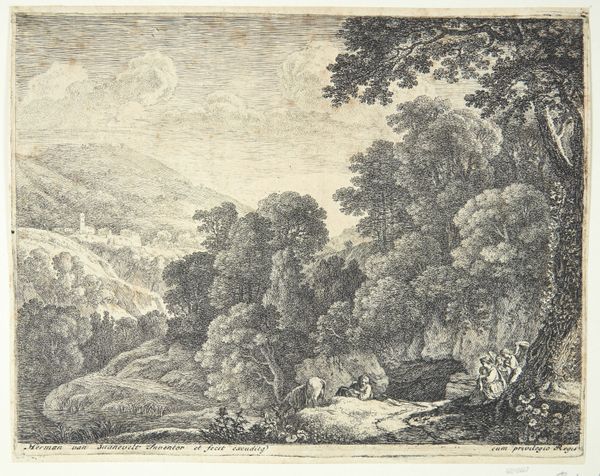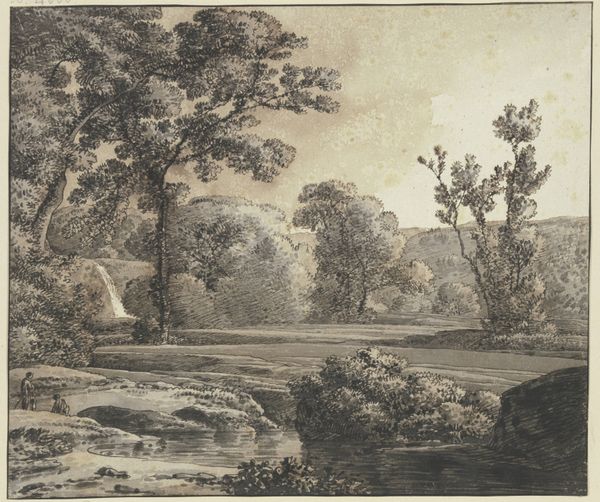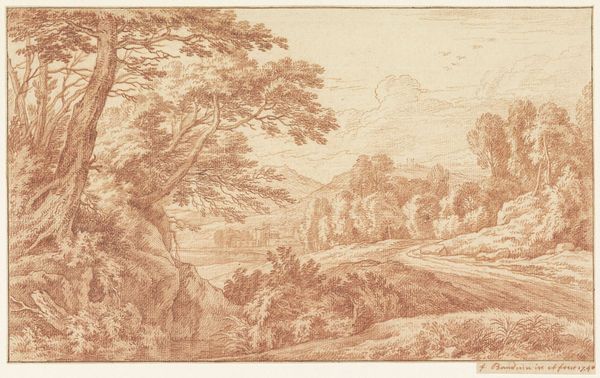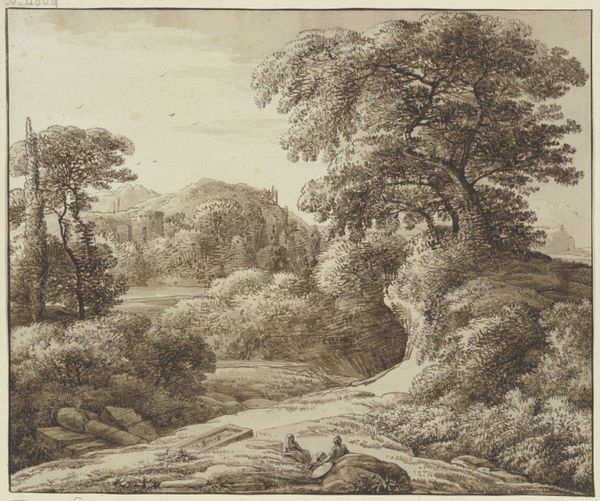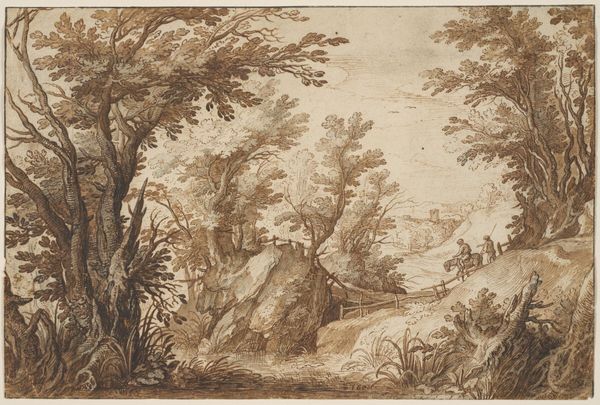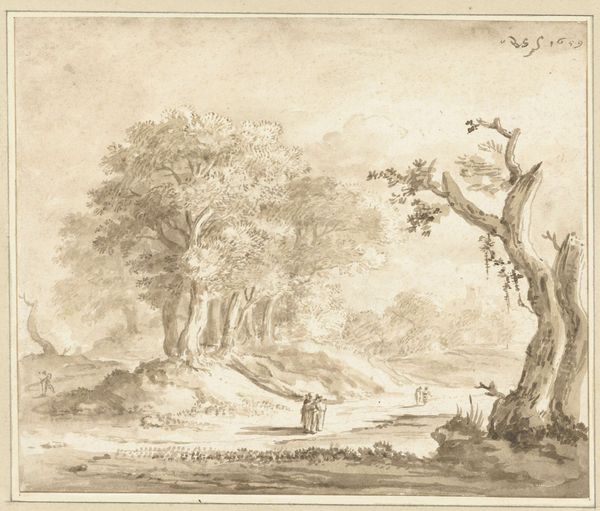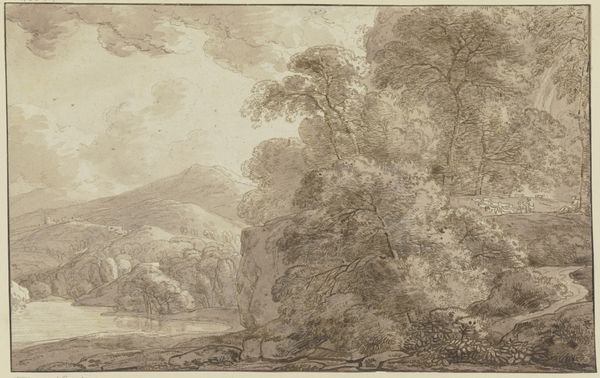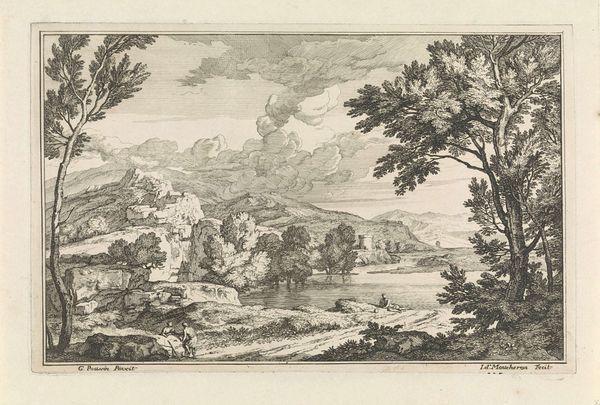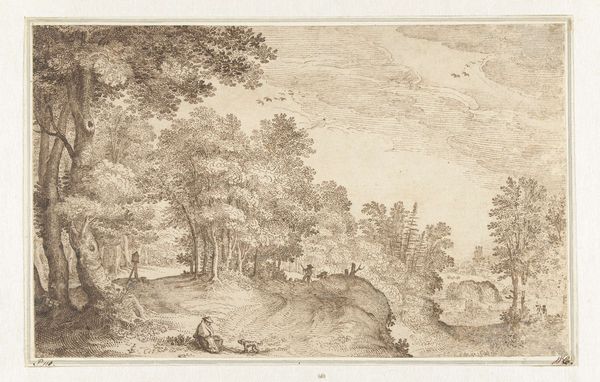
drawing, charcoal
#
drawing
#
pencil sketch
#
landscape
#
charcoal drawing
#
pencil drawing
#
romanticism
#
charcoal
Dimensions: height 467 mm, width 615 mm
Copyright: Rijks Museum: Open Domain
Editor: So, this is *Italiaans landschap* – or *Italian Landscape* – by Johann Conrad Steiner, created sometime between 1767 and 1818, using charcoal and pencil. I'm immediately drawn to how serene and almost dreamlike it feels, yet something about the delicate rendering makes me think of class disparity, perhaps? How do you interpret this work? Curator: That's an astute observation! The Romantic landscape tradition, of which Steiner was a part, often idealized nature as a retreat from industrializing society. But it’s important to consider who *had* the luxury to retreat. Who owned that land? Who worked it? This idyllic scene often masked the social realities of land ownership and labor. How do you think the composition itself reinforces or challenges that social narrative? Editor: Hmm, the composition almost seems to be shielding the figures to the right, the workers. They’re obscured and not as detailed as the more majestic parts of nature, further distancing us from any sort of honest look into the labor of this place. Is this common in landscapes of the time? Curator: Precisely. It's crucial to remember that these landscapes, seemingly neutral, participated in the construction of national and class identity. They reinforced a sense of belonging for some, while simultaneously obscuring the contributions and experiences of others. Considering the style, Romanticism valued subjective emotional experience, often tied to ideas of nationalism, doesn’t it make you wonder whose experience is being privileged here, and whose is erased? Editor: Absolutely, it recontextualizes my initial understanding. I'd not considered the privilege inherent in appreciating a landscape while ignoring the labor intertwined with it. I have to say, I see the sketch in an entirely new light. Thanks. Curator: Indeed. This exploration emphasizes the importance of seeing art history as entangled with socio-political power, where idyllic beauty often hides complex realities of inequality and historical exploitation.
Comments
No comments
Be the first to comment and join the conversation on the ultimate creative platform.
